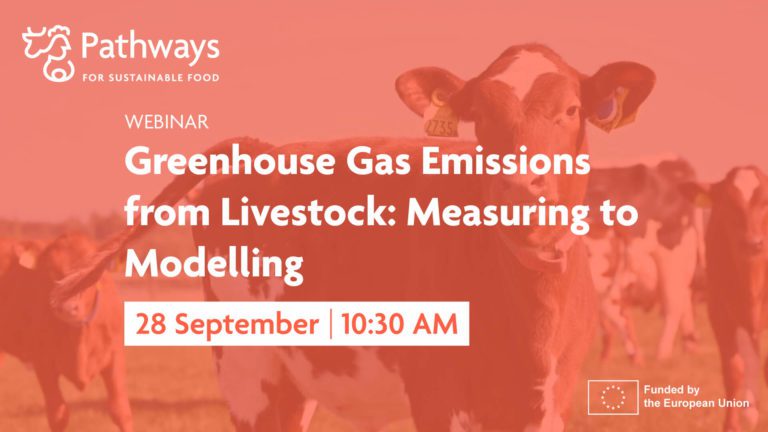28 September 2023
Online
The livestock farming sector has been in the limelight for its outsize contributions to climate change: in the EU, it makes up more than half of methane emissions. While not as abundant as carbon emissions, methane is particularly dangerous as its power to trap heat in the atmosphere is much stronger, having a global warming potential 84 times greater than carbon on a 20-year timescale.
Tackling these greenhouse gases is imperative to combat the climate crisis. A rapid and sustained change in human industrial activity is necessary, including transforming animal agricultural processes to increase efficiency and reduce harmful emissions. Studying and measuring these emissions can be used to build models, which can illustrate a sustainable path forward for European agriculture. This webinar presented concrete examples of measurements and modelling and provided an opportunity for open discussion on the subject.
Learn from the experts who shared their insight on animal nutrition, circular agriculture, and more:
Speakers

Amandine Menet
Project manager at the socio-economics and impact division of Institut de l’Elevage (idele)

David R. Yáñez-Ruiz
Senior Research Scientist at Consejo Superior de Investigaciones Científicas (CSIC)

Presentation
Recording
Summary
- Agriculture, in particular livestock, makes a significant contribution to greenhouse gas emissions worldwide, similar to transportation.
- Nitrous oxide, methane, and carbon dioxide are very different, in terms of GWP (global warming potential), as well as the solutions required to mitigate them
- Where do these emissions come from exactly?
- Direct
- Feed production (CO2, N2O)
- Animal physiology (CH4)
- Manure management (CH4, N2O)
- System (indirect, along the supply chain)
- Energy, processing, transport (CO2)
- Direct
- Three main levels of quantifying emissions (by increasing complexity)
- Tier 1 = understands methane produced by one animal and multiplies it by farm size
- Tier 2 = factors in different diets into the methane production
- Tier 3 = very rarely done, sophisticated country-specific model which considers many more extraneous factors, including seasonal variation and so on, with international peer review
- Two (tier 2) methods to gather livestock data
- “Gold standard method” is a respirometry chamber, where an animal stays for 2 or 3 days, and the air quality is monitored
- Greenfeed is a contraption, sometimes solar-powered, in which an animal can feed and have its breath measured simultaneously, very accurate and more natural for the animal
- Accuracy in emissions factors have been improved under PATHWAYS, in which developed new guidelines for sheep and goats, hopefully to be included in the next IPCC update on food systems measurement
- These results are analysed in models, which can clearly display where reductions in emissions along the production line can be
- Reduction examples
- Nutritional additives, by-products as alternative feeds (lowering fertiliser use), and increase longevity (which can dilute the methane produced as the animal grows, for example)
- Farms are so heterogeneous – across Europe and the world – that it is difficult to generalise about them accurately
- A country’s wealth, industrial level, climate, soil, breeds of animals, all have an effect
- One significant challenge is incorporating low-input systems into models
References
- FAO. 2023. Methane emissions in livestock and rice systems – Sources, quantification, mitigation and metrics. Rome. https://doi.org/10.4060/cc7607en
- McAuliffe, G.A. et al. 2023. Are single global warming potential impact assessments adequate for carbon footprints of Agri-Food Systems?, Environmental Research Letters, 18(8), p. 084014. https://doi.org/10.1088/1748-9326/ace204
